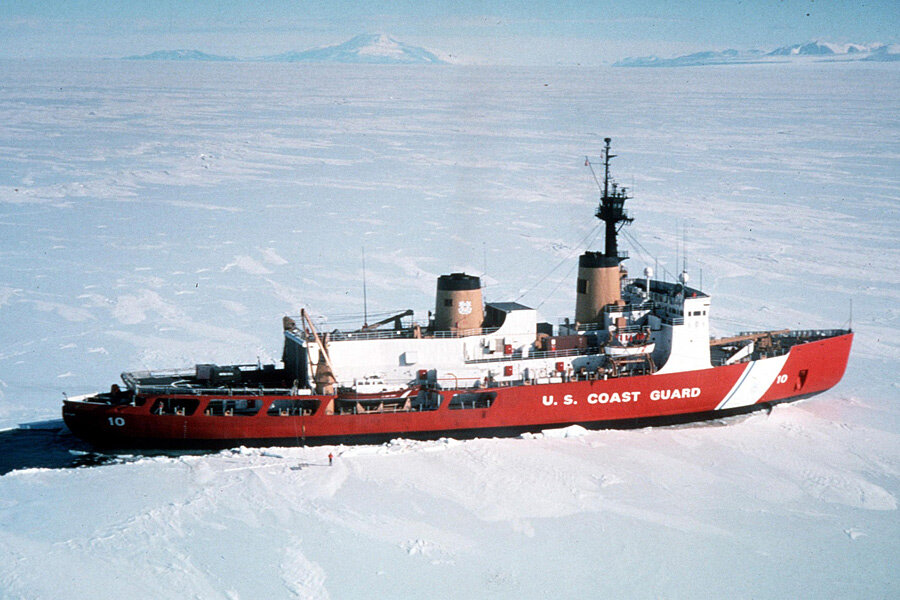Why President Obama wants more Arctic icebreakers
President Obama came to the Alaska's majestic Arctic region to talk about climate change, but his conversation on Day 2 of a historic three-day trip drifted into something more prosaic: the need for more US icebreakers.
On Tuesday, the president called for the United States to buy or build more Coast Guard icebreaking vessels in the Arctic, which has emerged as a growing region for commerce, tourism, and industry. The Arctic is believed to hold up to 25 percent of the world's untapped oil and gas supplies.
Icebreakers – for those in warmer climes – are hulking ships which sail into the big sheets of ice that cover the ocean in the Arctic, breaking up the frozen mass to open lanes of travel for other vessels.
The president said that the lack of icebreakers in the American fleet risks control of shipping routes, oil fields, and fishing grounds, and protected habitat, not to mention the ability for the US to perform emergency search-and-rescue operations.
"The growth of human activity in the Arctic region will require highly engaged stewardship to maintain the open seas necessary for global commerce and scientific research, allow for search and rescue activities, and provide for regional peace and stability," the White House said, in a statement.
According to the White House, the US currently has two functioning icebreakers in its fleet, with only one of those being able to perform heavy-duty operations. That compares with 40 icebreakers for Russia, with 11 more on the way.
Retired Coast Guard Adm. Robert Papp Jr., who serves as US special representative for the Arctic, said when he joined the Coast Guard in 1970, the US had eight heavy icebreaking ships.
"Do we need eight icebreakers? I think not. But I know we need more than one, which is what we’ve got right now," Admiral Papp said at a panel discussing the topic last month. "The problem is, what’s the national imperative now? And that’s what I’ve been struggling with."
The president’s proposal speeds up the acquisition of a new heavy-duty Arctic ice breaker by two years, to 2020, and calls on Congress to fund the construction of additional vessels.
Climate change has rapidly changed the landscape of the Arctic region. Melting sea ice has opened up the area for new opportunities, but also stepped up international rivalries as the US struggles to assert itself into the space.
Russia has continued to grow its influence itself in the Arctic. Last month, Russia submitted a claim to the United Nations to expand its territory by some 463,000 square miles of the Arctic sea shelf, extending more than 350 nautical miles from the country's shore.
Along with his call for more icebreaking ships, Obama plans to hike to the melting Exit Glacier and tour Kenai Fjords National Park by boat in an attempt to shine a light on the realities of climate change.
"I’ll be sharing my experiences with you along the way, because I want to make sure you see what I’m seeing," the president wrote Monday in a post on Medium. "And when you do, I want you to think about the fact that this is the only planet that we’ve got – and we’ve got to do everything we can to protect it."







